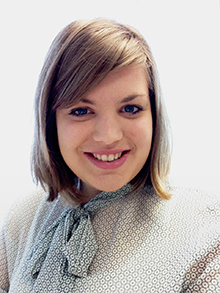Thank you to all who responded to the recent survey related to APCO’s effort to reclassify Public Safety Telecommunicators as "Protective Service Occupations." There was an excellent response that offered a helpful look at trends in the field. Check out APCO’s SOC Revision page for a summary of the additional information APCO provided to the federal officials as a result of the survey. Additionally, we’ve added a brief description of a newly-released letter of support from the Chief of the FCC’s Public Safety and Homeland Security Bureau. We will continue to keep you posted as we await further action by the federal officials overseeing the reclassification process.
|
Do you know that dollars from the Silent Key and CAC Scholarship Programs can be used for APCO’s Certified Public-Safety Executive (CPE) Program? That’s right. So, if you are interested in becoming a CPE during the next year — but need financial support to do so – be sure to complete your scholarship application before March 31, 2017. The next CPE sessions begin July 5, 2017, and January 3, 2018. The application deadline for both of these sessions is April 15, 2017.
|
Be sure to check out a special guest post on APCO’s TabletopX blog by FirstNet Senior Applications Architect, Jeff Posner. Posner highlights FirstNet’s interest in fostering the development of the best possible apps for public safety and notes that efforts like APCO’s AppComm website and collaborations with FirstNet have helped to increasingly involve public safety in the dizzying pace of app development. Read the full article here.
|
- Participate in the creation of an ANSI standard addressing incident handling. Learn more and apply.
- Participate in the creation of an ANSI standard addressing advanced automated collision notification (AACN). Learn more and apply.
- Participate in the development of APCO standards through openings on the Technical, Training and Operational Sub-Committees of the Standards Development Committee. Learn more and apply.
The application deadline is January 20, 2017.
|
Whitney Chong, CMP, Events Coordinator
Whitney joined APCO as the events coordinator in August 2015. She’s a graduate of the University of Central Florida and a Certified Meeting Professional. One of her greatest passions is the meetings and events industry and being able to produce APCO’s annual conference. In her spare time she likes to go to Walt Disney World with her husband Kevin.
|
Ben Russell became APCO’s local advisor for Pennsylvania in January of 2015. While his day job as an aquatic biologist seemingly has little to do with radio, the program he works with has air to ground communications needs when working with helicopters. Mr. Russell first got involved with radio helping to guide his program to solutions that fit the need.
|
Fox 5 Vegas
Chrissie Coon, the public safety liason for Firstnet, and TJ Kennedy, President of Firstnet, discuss the new public safety network.
|
KSN
A 9-1-1 dispatcher, Chanda Jumet, helped a caller deliver a baby. She heard the baby’s first cry over the phone. "It makes you remember why you do the job you do. You hear all of the bad stuff that happens and then you hear the one good and it makes everything worth it," she said.
|
WUFT
The Emergency Health Mental Dispatch is part of a pilot program focused on teaching emergency dispatchers how to effectively answer emergency calls made by people with serious mental illnesses and those who are in a personal conflict, such as having suicidal thoughts. Telecommunicators are responsible for dispatching law enforcement as well as trying to keep callers from harming themselves or others.
|
Omaha World-Herald
In Omaha, a 9-1-1 outage means that callers seeking help hear only a rapid busy signal. Douglas County, the largest in Nebraska, plans to make improvements — eventually. Former 9-1-1 Director Mark Conrey said most of the problem will be resolved when the county’s system upgrades to NextGen 9-1-1. That could be several more years away.
|
Wicked Local
Computer monitors show maps, which can now help dispatchers follow where an emergency — be it a crime, medical, fire or event — might be unfolding. It's just one tool responders hope will help make responding to emergency calls faster and more accurate as the majority of calls now come in through cell phones and means other than land lines.
|

|
| |
|
